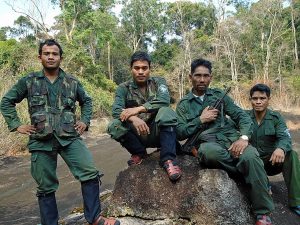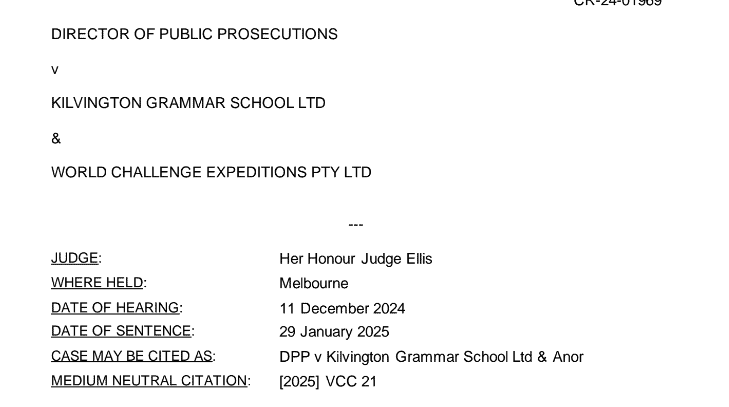In January 2025, Kilvington Grammar was fined over $100,000 for breaches of occupational health and safety (OHS) laws related to the death of one of its students, 16-year-old diabetic Lachlan Cook, who was on an overseas school trip. The best source of publicly available reports on this case appears to be the Australian Broadcasting Corporation. This article does not discuss the incident but focuses on the sentencing decisions and their relevance to OHS.
Category: Vietnam
A new perspective on trauma and its personal and social impacts
Our understanding of stress continues to evolve even though it seems to be splintering into mental health. mental illness, psychosocial harm, mental well-being and more. Recently Orla T. Muldoon of the University of Limerick published “The Social Psychology of Trauma- Connecting the Personal and the Political”. I dipped into this book and found some information pertinent to the occupational health and safety (OHS) approach to post-traumatic stress.
OHS needs to create discomfort
Occupational health and safety (OHS) decision-making by employers is dominated by reasonably practicable safety and health decisions. OHS advice is similarly dominated, leading to an industry that is cowed by the need for job security and tenure. OHS teaching in tertiary institutions is also influenced, if not dominated, by what is seen as (right-wing) “business realities”.
OHS is a small part of the university curriculum. In some universities, OHS education is missing entirely. The OHS discipline is not seen as important or marketable or an important source of revenue. A new book about universities in the United States in the 1960s and 1970s may help us understand the reasons for this.
Look to Enforceable Undertakings for OHS lessons
There are more work health and safety lessons from a Near Miss incident than a workplace death. There is also more information about how occupational health and safety (OHS) should be managed in an Enforceable Undertaking (EU) than there is from a prosecution.
Recently there were several EU’s in Queensland that illustrated these OHS management lessons. Here’s a discussion about one of them
Out of Range – Work Risks of Wildlife Protection Officers
by Melody Kemp
“It was nine at night and the shooters had the advantage of superior fire power and night vision goggles …. We stood no chance. Two friends were killed…”

David Paklett, a Wildlife Ranger working in Tanzania pulled up his trouser leg and showed me an ugly red scar that looked a bit like an alien pasted to his skin. It was 2013. We were in Spain’s ancient university town of Salamanca, at WILD 10, a sporadic gathering of wilderness and conservation specialists. He told me how the year before, he and his colleagues had been in a John Woo style shoot out with Vietnamese poachers. The Vietnamese were overhead in a helicopter, firing at them with automatic rifles. ‘It was nine at night and the shooters had the advantage of superior fire power and night vision goggles.’
His words have stayed with me.
‘We stood no chance. Two friends were killed, and I got this.’ When I looked up, his eyes had the look of someone who was looking back with horror. ‘Did you ever talk about that night with anyone?’ I asked sipping a Rioja red. ‘Who is there to tell?’ David grimaced. ‘It’s part of the job. The game has changed. The Chinese are arming these guys and making sure they get away with the kill. The forces behind them are so powerful and we have no resources.’
Lao Rangers in the Annamite mountain range report the same fear according to Bill Robichaud. ‘Camera traps showed these guys (poachers) to have the latest technology, to be well dressed and armed, with modern communication and GPS gear.’ Continue reading “Out of Range – Work Risks of Wildlife Protection Officers”
OHS issues from over the horizon
 On 18 March 2015, the Melbourne office of Herbert Smith Freehills conducted a breakfast seminar that doubled as a launch for the latest edition of the CCH Wolters Kluwer book Australian Master Work Health and Safety Guide (reviewed recently). The seminar had three of the book’s authors talking about emerging occupational health and safety (OHS) and work health and safety (WHS) issues for Australia. These included
On 18 March 2015, the Melbourne office of Herbert Smith Freehills conducted a breakfast seminar that doubled as a launch for the latest edition of the CCH Wolters Kluwer book Australian Master Work Health and Safety Guide (reviewed recently). The seminar had three of the book’s authors talking about emerging occupational health and safety (OHS) and work health and safety (WHS) issues for Australia. These included
- The growth of WHS/OHS “Assurance Programs”
- The potential implications for the safety management from the Trans-Pacific Partnership and Free Trade Agreements.
- The OHS trend in the European Union for “Supply Chain Safety“.
The first two of these topics are discussed below.
Injury Reporting Rates
Government OHS policies are, more often than not, based on statistics. The most common statistic is workers’ compensation claims as they are trackable and involve money. Another is fatality data.
Many countries have an obligation on employers to notify the proper authorities if a serious injury has occurred. We know that in some countries injuries and deaths are under-reported. In the legal, and illegal, coal mines in China, sometimes workplace deaths are actively disguised, ignored or denied.
Just this week, a Vietnam news service reported on the lack of injury reporting identified by the Ministry of Labour, Invalids and Social Affairs’ Labour Safety Department, in Vietnam.
The report says that “only 7,000 companies reported work-related accidents” for 2008 and that this equates to only 10 per cent of the reportable accidents. Using the mathematical calculation skills of SafetyAtWorkBlog (an Arts graduate) that means that over 60,000 workplace injuries are not being reported.
Earlier this year a more explanatory article appeared which estimated 500 deaths each year form workplace incidents.
Perhaps there is some hope that if the government is aware of the lack of reporting, it can accommodate this in its national programme on labour protection, safety and hygiene that aims for a reduction of at least 5% in work incidents by 2010.




